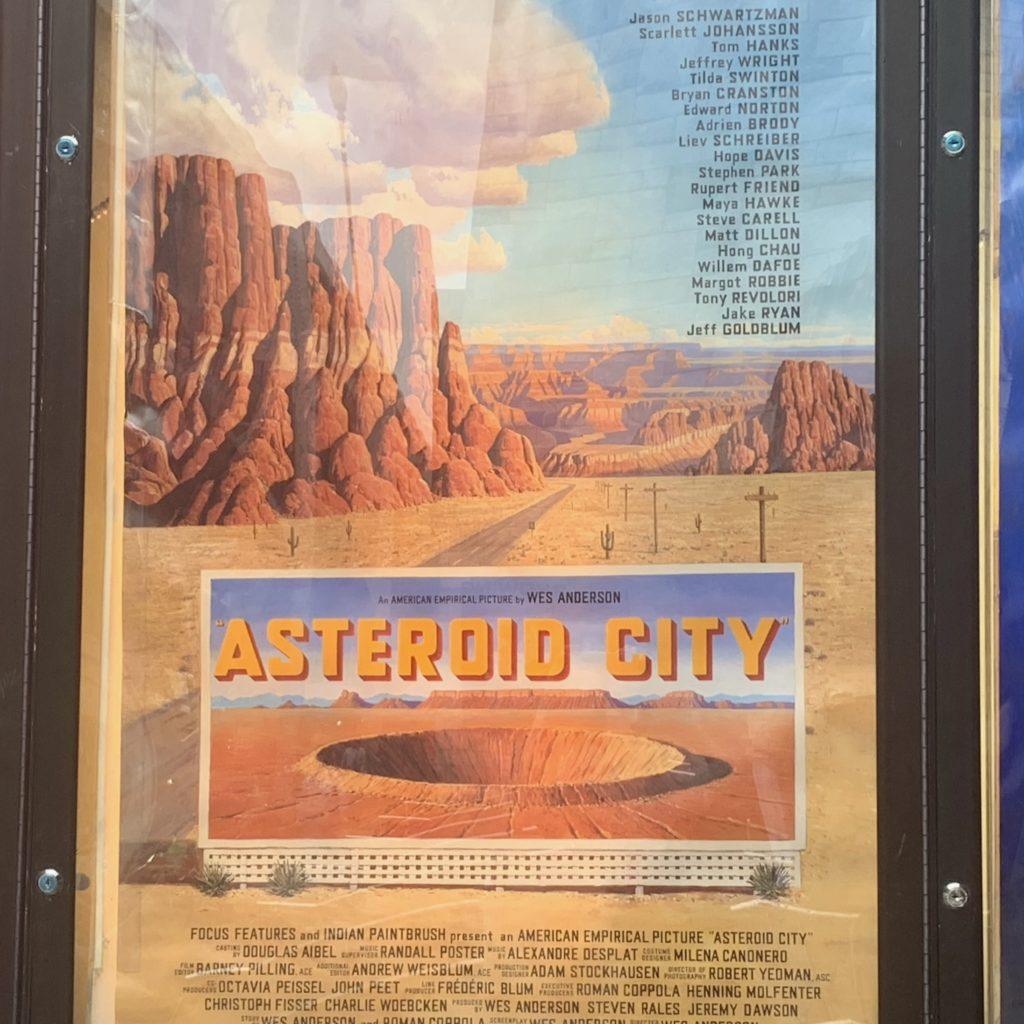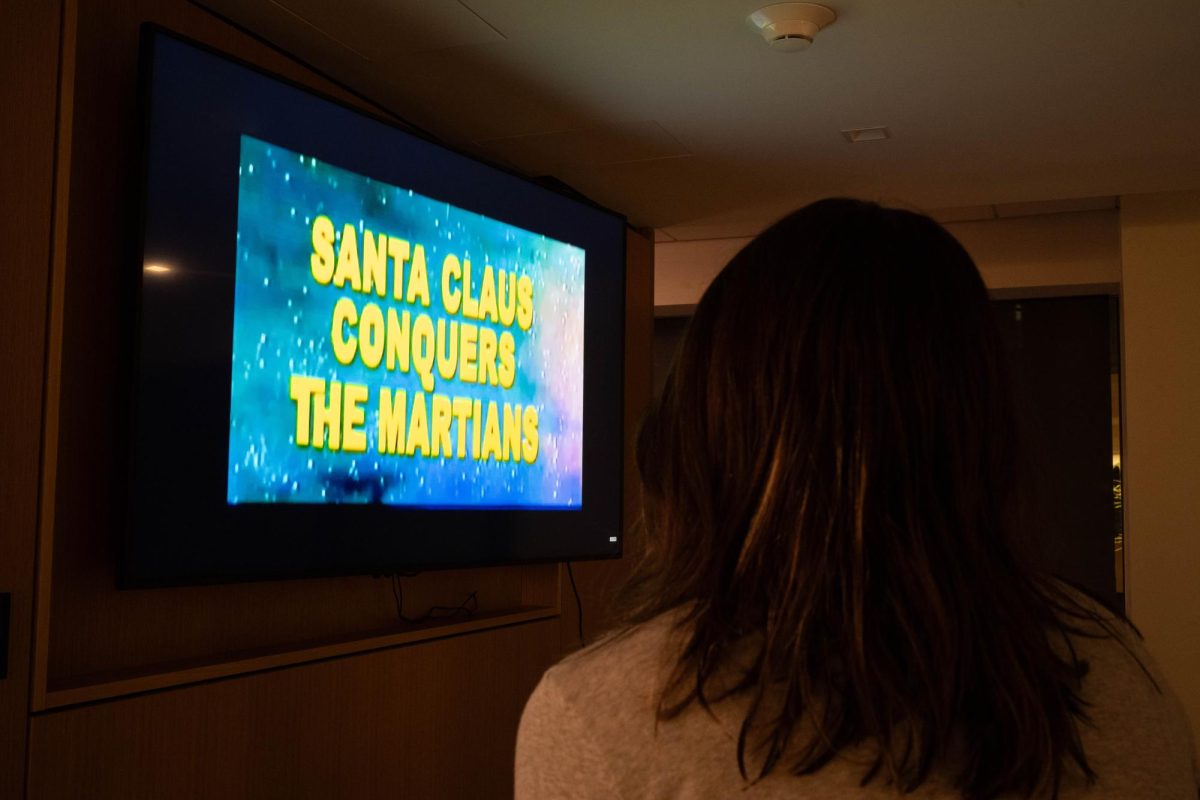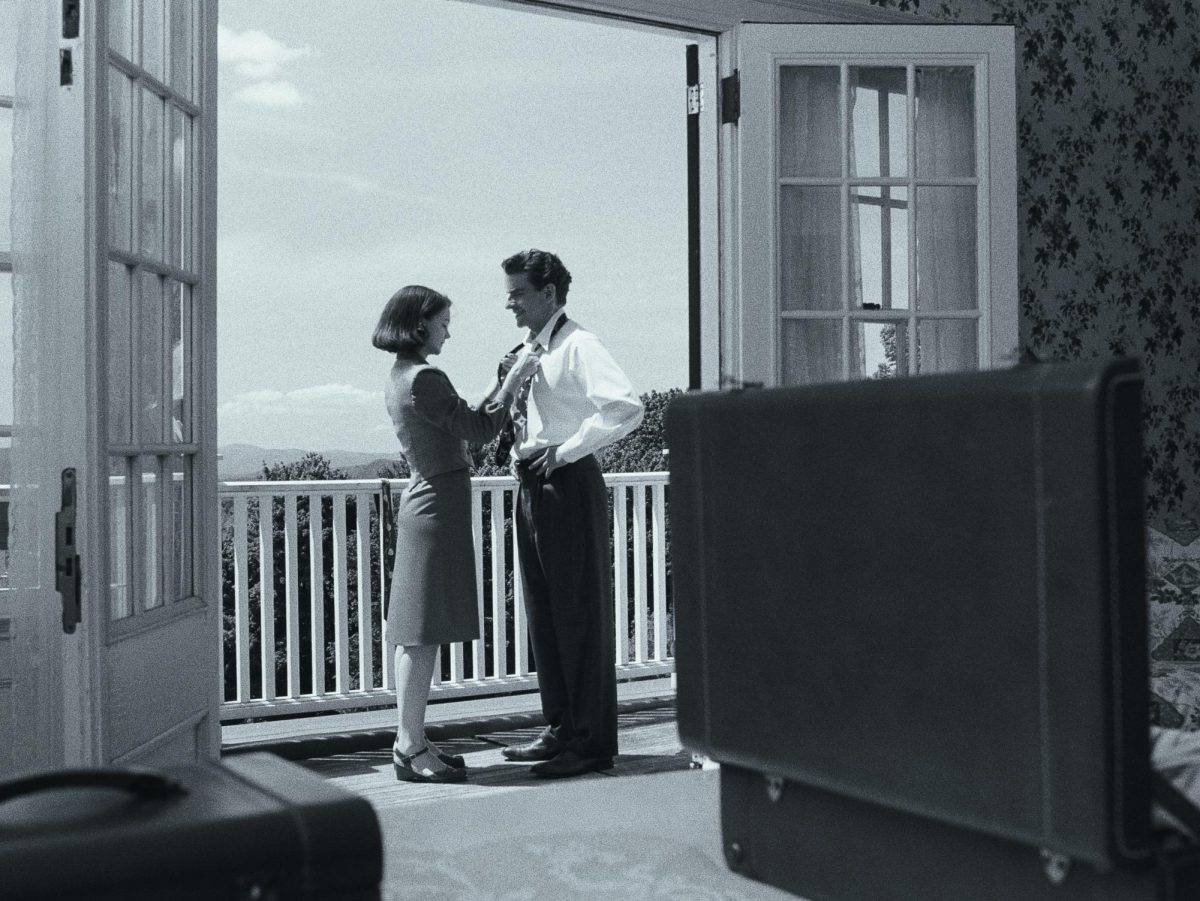In an artistic landscape becoming increasingly threatened by artificial intelligence and cost-saving cuts, look no further than Wes Anderson to remind us of the critical value of the auteur.
“Asteroid City,” Anderson’s latest achievement, is a wonderfully meta take on the director’s own style, themes and beliefs, despite a bloated cast and a rushed ending. Anderson’s unique directorial style is once again a sight to behold, sure to delight fans of the director’s work and general audiences alike.
The unconventional film depicts two concurrent narratives. The first is a black-and-white fictional television program going behind the scenes on an in-universe stage play, “Asteroid City.” The in-universe play is then brought to life as the second narrative, telling the story of a 1950s space convention, located in the titular Asteroid City — a desert town surrounded by rocks, cacti and nuclear tests — which is then visited by an alien.
At first glance, the atypical storytelling structure may appear daunting, but the film’s tremendous pacing and meticulously crafted design, which depicts the television program in a smaller aspect ratio and in black and white, allow the viewer to acclimate to the style quickly. What follows is Anderson’s most self-reflective and meta entry to date, with the format allowing the director to broadcast his own indecisive musing with the filmmaking process through the play’s actors.
The play depicts Augie Steenbeck (portrayed by Jason Schwartzman) and his son Woodrow (portrayed by Jake Ryan) and three daughters attending the Junior Stargazer convention in Asteroid City. Steenbeck is troubled by his inability to tell his children about the recent death of their mother, which creates tension with his father-in-law Stanley (portrayed by Tom Hanks).
The play’s plot is far from complicated, but like in his previous works, Anderson uses his plot’s simplicity to very neatly intertwine deeper elements, namely of death and acceptance of their own life’s story. Much of this is conveyed through interactions between Steenbeck and his love interest Midge Campbell (portrayed by Scarlett Johansson) in beautifully shot conversations, which place the two stars in opposite-facing windows, striking a melancholic vibe familiar to Anderson’s style.
The meta elements, on the other hand, focus on playwright Conrad Earp (portrayed by Edward Norton), the writer of the play. Earp’s quirky mannerisms and Southern accent pay a welcome homage to real-life playwright Tennessee Williams.
Earp’s conception, development and casting of his play are shown throughout the film, and Schwartzman and Johansson also portray the actors who star in the “Asteroid City” play. The trio grapple with artistic crises and ruminations that feel pulled directly from Anderson’s life experiences as a creator, such as a back-and-forth conversation on whether to cut a scene from the in-universe play.
Schwartzman, who has collaborated with Anderson on numerous occasions, is at his best, effortlessly portraying the arcs of both his own character and his in-universe character’s actor to perfection, conveying a heartfelt transition from grief to acceptance. Johansson, Hanks and Norton, who each have sizable roles, are excellent as well, but unfortunately the rest of the very, very big cast do not get to share the benefit of their generous screen time.
Continuing a recent trend in Anderson’s work, “Asteroid City” features an incredibly large cast made up almost entirely of recognizable stars, many of whom have worked with Anderson in the past. None do a bad job, but the scale of the cast combined with the relatively short runtime of 105 minutes means most of the ensemble have very little to do, and as a result, their presence feels wasted, potentially disappointing fans eager to see the likes of Maya Hawke and Willem Dafoe, among others.
Another disappointment of “Asteroid City” is its ending, which feels rushed and tonally inconsistent from the rest of the film’s climax. The meta plot ends well, with a beautifully self-reflective scene involving Steenbeck’s in-universe actor struggling with the motivations and conclusion of his character, but the in-universe play’s ending doesn’t quite hit the same emotional notes, leaving an odd taste in viewers’ mouths.
Despite these criticisms, “Asteroid City” absolutely delivers on the visuals. Anderson’s distinct style is once again pushed to the extreme throughout the film, which is filled to the brim with gorgeous symmetrical shots, quirky camera movements and detailed set design so meticulous it necessitates multiple viewings to appreciate properly.
The in-universe play segments are defined by popping colors and charming desert backdrops, designed to look intentionally fake to better sell the play aesthetic. The meta segments are a little more daring, pairing its black-and-white color scheme with dramatic lighting and exquisite staging to capture its more emotional subject matter.
The visuals play to Anderson’s unflinching commitment to artistic merit and achieve a harmonious maturity not yet seen before in his filmography. Recent TikTok trends — as well as horrifying AI creations — have attempted to capture Anderson’s style in other scenarios, but “Asteroid City” proves that, for the time being, the only person able to truly balance this bright pastel, hazy aesthetic with poignant notes of melancholy is Wes Anderson himself.
Auteurs, filmmakers whose style is considered so unique that they “author” their movies, are rare in today’s media landscape, and studio executives are creating an environment that largely opposes unhampered artistic expression. Thus, Anderson’s films have become a welcome reminder of the value of personalized, genuine filmmaking and the artistic achievements that come with it, making films like “Asteroid City” even more important.
The massive cast and haphazard ending make “Asteroid City” far from perfect, but its visuals, performances and direction serve as a welcome reminder of artistic value. Anderson’s daring meta take on the story, featuring ruminations on his own work, makes it a unique pillar of his already impressive filmography, sure to stand for a long time to come.






